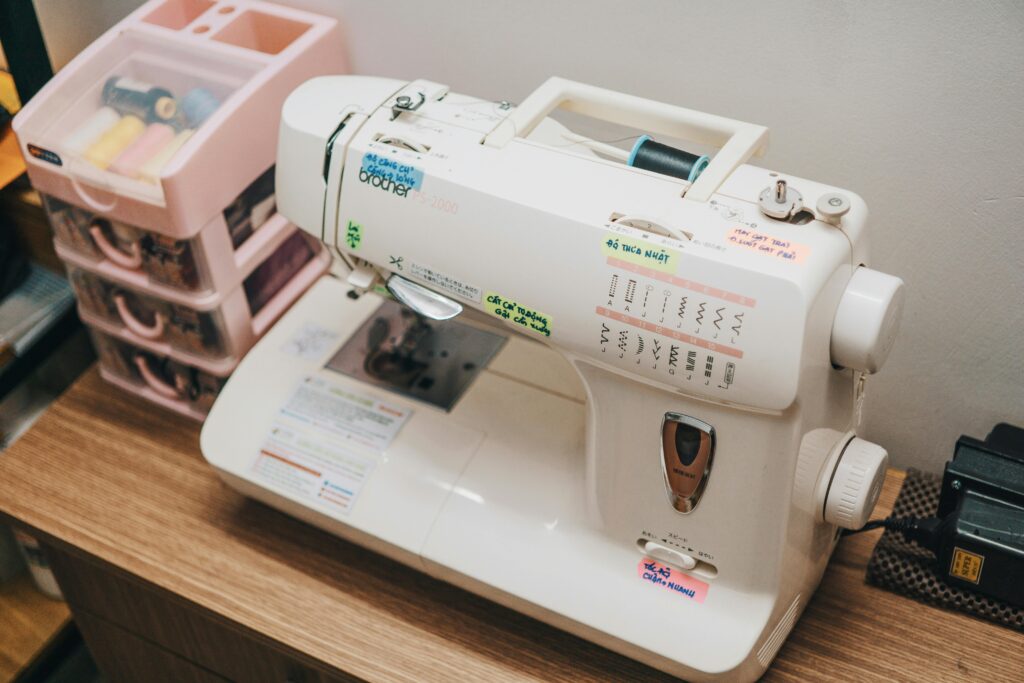Sewing machines can seem intimidating at first. There are a lot of moving parts, and everyone seems to have some sort of horror story about something going wrong. But relax, it doesn’t have to be scary. We’re going to talk about some parts of the sewing machine today and cover the basics. We’ll dive deeper into other things about the machine in later weeks, this is just intended to be an overview.

It’s also important to note that every machine is slightly different. Different brands do things different ways. Some are extra fancy and some only do a single type of stitch. The things I cover today I am going to try to keep fairly general so that it will apply to most types of machines. If yours is different, that’s ok!
Hand Wheel
On the right side of the sewing machine, there is a circular wheel that turns if you move it by hand. It will turn both ways freely. This wheel moves the needle up and down manually. This can help with starting and stopping sewing, as well as precise needle placement if you are in a tricky spot. In older machines, this is the only way for the needle to move, but these days it is electronic.
Presser Foot
Down by the needle, there is a flat thing attached. This is the presser foot. It can be raised or lowered, usually there is a lever to move it. This helps the machine hold the fabric in place and flat to be sewn. The machine will come with a standard foot that will work for many purposes, however there are many types of specialized feet for other types of sewing. These might include a zipper foot, a ruffler, and more.
Feed Dogs
Under the presser foot, there are two slightly raised ridged bars. These are called the feed dogs. When the sewing machine is in action, they raise and lower slightly, as well as move forward to back. Their purpose is to grab the bottom layer of fabric and feed it through the sewing machine as it sews a seam. Depending on the stitch selected, they may move more or less as required.
Foot Pedal
Most modern machines use a foot pedal to start and stop sewing. Some older machines may have a knee pedal or treadle instead. The more you press down on this pedal, the faster the machine will sew. Just like driving a car, it will take some time to get used to the sensitivity of your particular foot pedal, so try it out on a bit of scrap fabric first until you get the hang of it.
There are many more parts to a sewing machine, but hopefully these give you a glimpse into how it works. Do you feel more confident about your machine? Did you learn anything?

